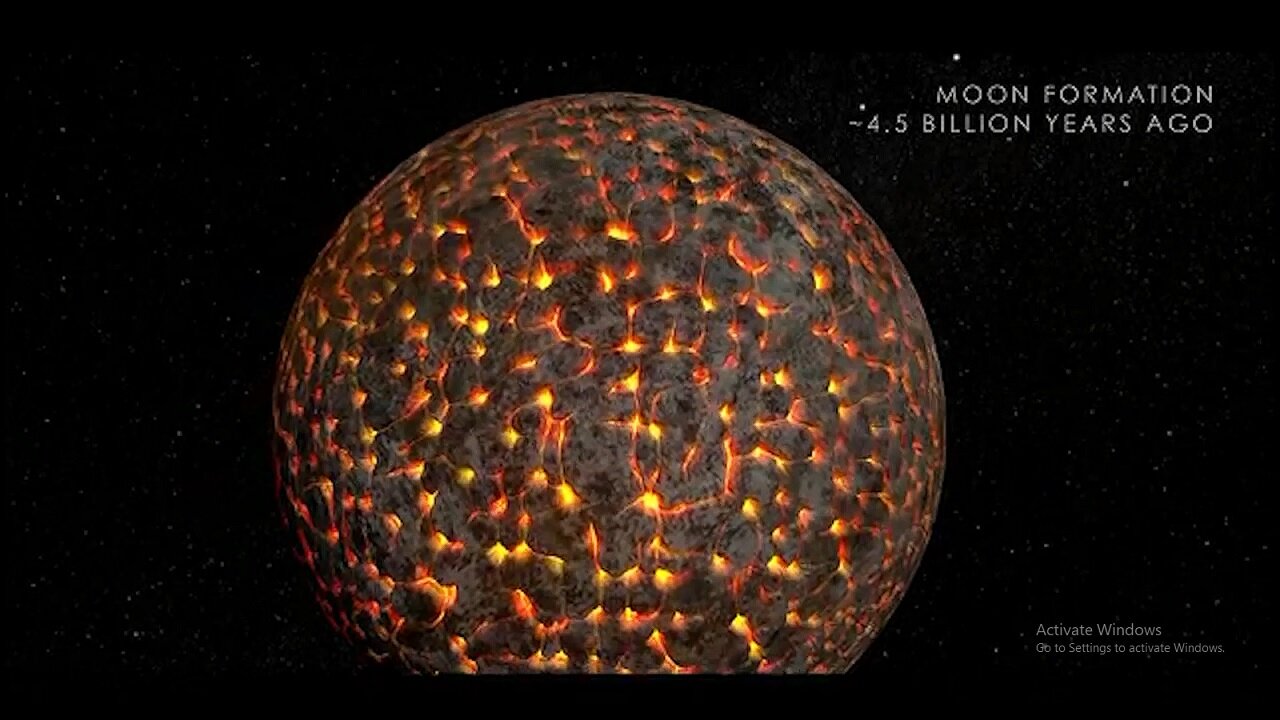Premium Only Content

Evolution of the Moon
The evolution of the Moon refers to the processes and events that have shaped the Moon over billions of years. While there are several theories about the Moon's origin, the most widely accepted one is the Giant Impact Hypothesis.
According to this hypothesis, around 4.5 billion years ago, a Mars-sized object called Theia collided with the early Earth. The impact resulted in the ejection of debris, which eventually coalesced to form the Moon. Initially, the Moon was much closer to the Earth and orbited it much more rapidly than it does today.
Over time, the Moon gradually moved away from the Earth due to tidal interactions. The gravitational pull of the Moon causes tides on Earth, and these tides exerted a gravitational force on the Moon as well. This interaction gradually slowed down the Moon's rotation and caused it to move further away from the Earth.
The Moon's surface has been shaped by various geological processes, including impact cratering, volcanic activity, and tectonic forces. The Moon lacks a significant atmosphere, which means that erosion and weathering, as we see on Earth, are absent. As a result, many of the Moon's craters and surface features have remained relatively unchanged over time.
The Moon's volcanic activity was most prevalent around 3 to 4 billion years ago, resulting in the formation of large lava plains called maria. These maria are visible as dark patches on the Moon's surface.
In recent decades, scientific missions, such as the Apollo program and more recent lunar missions, have provided us with detailed information about the Moon's composition, structure, and geological history. Through these missions, scientists have gained insights into the Moon's evolution and its relationship with the Earth.
Overall, the study of the Moon's evolution is ongoing, and further research and exploration are necessary to fully understand its history and the processes that have shaped it.
-
 0:46
0:46
Dr Disrespect
2 days agoIt's not just a stream... it's an experience
467K2.79K -
 1:28:27
1:28:27
Kim Iversen
1 day agoBOMBSHELL: Secret British Military Plot to Prolong the Ukraine War And Take Down The Grayzone
77.3K50 -
 11:54
11:54
Professor Nez
4 hours ago🚨CHILLING REVELATION: Tucker Carlson Reveals Dems NEXT PLAN to STOP Trump!
38.5K24 -
 6:51
6:51
Colion Noir
4 hours agoI have Something To Say To Gun Owners
22.7K16 -
 1:18:24
1:18:24
Glenn Greenwald
8 hours agoLiberals Encourage Family & Friends To Separate Over Political Disputes; Segment Debut Of System Pupdate: Profiles Of Rescued Dogs | SYSTEM UPDATE #373
83.5K136 -
 1:24:53
1:24:53
Flyover Conservatives
23 hours agoMarketing Madness or Manipulation? The War on Western Identity - Alex Newman; Economic Update - Dr. Kirk Elliott | FOC Show
25.2K1 -
 1:15:05
1:15:05
PMG
23 hours ago $3.75 earned"Big Pharma EXPOSED: The HIDDEN Cures They Tried to Bury"
21.7K4 -
 LIVE
LIVE
Tundra Gaming Live
5 hours ago $1.43 earnedThe Worlds Okayest War Thunder Stream
266 watching -
 1:49:52
1:49:52
VOPUSARADIO
12 hours agoPOLITI-SHOCK! Back To Back Guests: Rebekah Koffler & Dr. Michael Schwartz
14.1K -
 59:44
59:44
The StoneZONE with Roger Stone
4 hours agoWill the Perps of the Russian Collusion Hoax Face Justice? | The StoneZONE w/ Roger Stone
26.2K6